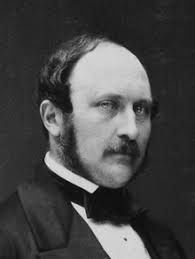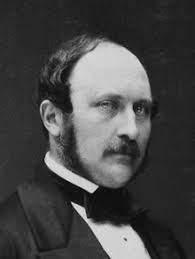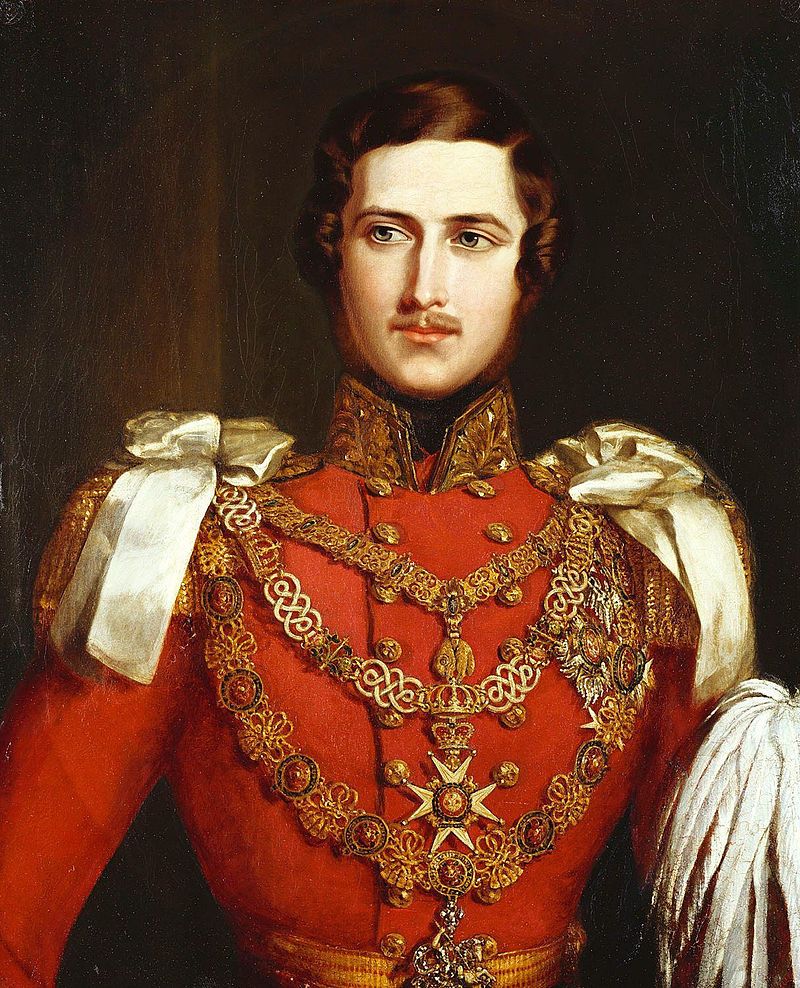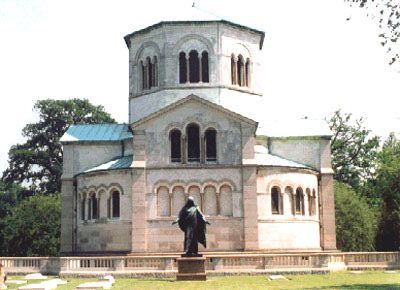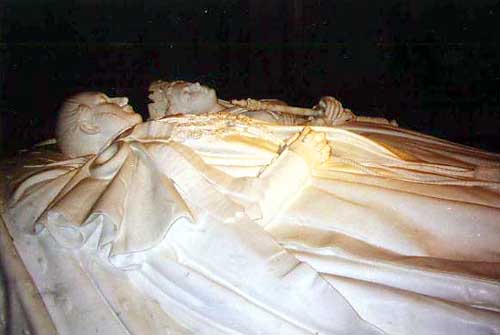His family belonged to the Ernestine branch of the House of Wettin and was related to many of the royal families of Europe, with male members of the family on the thrones of Belgium, Bulgaria, and Portugal. His paternal aunt, Juliane, married Grand Duke Constantine of Russia, and another paternal aunt, Victoria, married Prince Edward, Duke of Kent, a son of King George III of the United Kingdom of Great Britain and Ireland.
A marriage between Albert and his first cousin, Princess Victoria, the only child of the Duke of Kent, and his aunt, Victoria, and the heiress presumptive to the British throne, was originally proposed by their grandmother, Augusta, the Dowager Duchess of Saxe-Coburg-Saalfeld, but was later championed with greater effect by their uncle, Leopold I, King of the Belgians.
Leopold, prior to accepting the Belgian throne, had been married to an heiress to the British throne, Princess Charlotte of Wales, the only child of the Prince Regent, the future King George IV, and he would eventually have been Prince Consort if it had not been for the unexpected death of Princess Charlotte soon after giving birth to a stillborn son, their only child.
Albert and Victoria met both before and after Victoria's accession to the throne and the Queen, owing to her superior rank, proposed to Prince Albert on October 15, 1839, their marriage being formally announced on the following November 23rd. Albert was naturalized by an Act of Parliament; made a Royal Knight of the Order of the Garter; and granted the style of Royal Highness prior to their marriage, which occurred on February 10, 1840 in the Chapel Royal at St. James's Palace. Their marriage would produce nine children and proved to be a very happy and successful one.
Albert was instrumental in the evolution of Britain's constitutional monarchy by curbing Victoria's naturally partisan tendencies, sparing Britain from the revolutions that impacted the continental European monarchies in 1848. Although Albert was entrusted with the administration of the Queen's estates and household, the Queen was initially reluctant to share any of her official duties with her husband, yet by the end of his life he was seen as king, in all but name, Charles Greville, the diarist, writing, "He is King to all intents and purposes (Greville, Diary, Volume V, page 257)."
Albert was officially granted the title of Prince Consort on June 25, 1857. He promoted educational reform; advocated for the abolition of slavery throughout the world; played a key role in the Great Exhibition of 1851; and was instrumental in diffusing the real risk the United Kingdom had of being drawn into the American Civil War through his personal intervention in the Trent Affair in 1861, only a short time before his death.
Prince Albert died at Windsor Castle on December 14, 1861 with the official cause of death being cited as typhoid fever, but that diagnosis is questioned today based on the symptoms he experienced for some time prior to his death. His widow, Queen Victoria, entered into mourning, from which she would never fully withdraw, wearing black for the rest of her life.
Prince Albert was interred at St. George's Chapel at Windsor Castle until the Royal Mausoleum at Frogmore was sufficiently completed to receive his remains.
Current Burial Location with Family Links.
Prior Burial Location.
His family belonged to the Ernestine branch of the House of Wettin and was related to many of the royal families of Europe, with male members of the family on the thrones of Belgium, Bulgaria, and Portugal. His paternal aunt, Juliane, married Grand Duke Constantine of Russia, and another paternal aunt, Victoria, married Prince Edward, Duke of Kent, a son of King George III of the United Kingdom of Great Britain and Ireland.
A marriage between Albert and his first cousin, Princess Victoria, the only child of the Duke of Kent, and his aunt, Victoria, and the heiress presumptive to the British throne, was originally proposed by their grandmother, Augusta, the Dowager Duchess of Saxe-Coburg-Saalfeld, but was later championed with greater effect by their uncle, Leopold I, King of the Belgians.
Leopold, prior to accepting the Belgian throne, had been married to an heiress to the British throne, Princess Charlotte of Wales, the only child of the Prince Regent, the future King George IV, and he would eventually have been Prince Consort if it had not been for the unexpected death of Princess Charlotte soon after giving birth to a stillborn son, their only child.
Albert and Victoria met both before and after Victoria's accession to the throne and the Queen, owing to her superior rank, proposed to Prince Albert on October 15, 1839, their marriage being formally announced on the following November 23rd. Albert was naturalized by an Act of Parliament; made a Royal Knight of the Order of the Garter; and granted the style of Royal Highness prior to their marriage, which occurred on February 10, 1840 in the Chapel Royal at St. James's Palace. Their marriage would produce nine children and proved to be a very happy and successful one.
Albert was instrumental in the evolution of Britain's constitutional monarchy by curbing Victoria's naturally partisan tendencies, sparing Britain from the revolutions that impacted the continental European monarchies in 1848. Although Albert was entrusted with the administration of the Queen's estates and household, the Queen was initially reluctant to share any of her official duties with her husband, yet by the end of his life he was seen as king, in all but name, Charles Greville, the diarist, writing, "He is King to all intents and purposes (Greville, Diary, Volume V, page 257)."
Albert was officially granted the title of Prince Consort on June 25, 1857. He promoted educational reform; advocated for the abolition of slavery throughout the world; played a key role in the Great Exhibition of 1851; and was instrumental in diffusing the real risk the United Kingdom had of being drawn into the American Civil War through his personal intervention in the Trent Affair in 1861, only a short time before his death.
Prince Albert died at Windsor Castle on December 14, 1861 with the official cause of death being cited as typhoid fever, but that diagnosis is questioned today based on the symptoms he experienced for some time prior to his death. His widow, Queen Victoria, entered into mourning, from which she would never fully withdraw, wearing black for the rest of her life.
Prince Albert was interred at St. George's Chapel at Windsor Castle until the Royal Mausoleum at Frogmore was sufficiently completed to receive his remains.
Current Burial Location with Family Links.
Prior Burial Location.
Bio by: CMWJR
Family Members
Advertisement
See more Albert of Saxe-Coburg and Gotha memorials in:
Advertisement
